***
France/Spain 2011
Day 12 - 28th March - Santiago Cathedral Museum (Part 2)
Next was the wonderful cathedral museum. Unfortunately despite this being a major, touristed site, everything was in Spanish.
The first part of the museum I'd been to was the crypt, and it was horrible. It was mostly reconstructed musical instruments.



"Reconstruction of the choir teacher Matthew promoted by the council under the patronage of His Excellency the Fundación Pedro Barrie de la Maza project according to the doctors and ramon ramon Yzquierdo tunez hill perrin 1999"



"Horses of the epiphany of the choir"





Figure of St Matthew
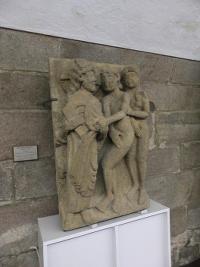


God scolding Adam & Eve




Crowned seated image of Santiago




Tympanum of the Epiphany (?)

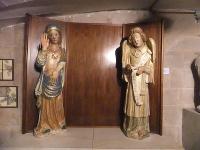


Annunciation, with bosomy Mary



Pieta




Removal of the bells from the Cathedral of Santiago
Story: "In the 830s a wandering hermit named Pelagius discovered a tomb which was taken to be that of the Apostle James the Greater, and the rest is history! A small church was built to house the tomb but was destroyed by the awful al-Mansur on one of his rampages in 997. The dreadful little man then had Christian slaves carry the church bells from Compostela to the Great Mosque of Cordoba. 240 years later, in 1236, Fernando III ("The Saint"), King of León and Castile (1198 - 1217 (King of Castile) - 1230 (King of León) - 1252 (54)), probably another dreadful little man, captured Cordoba and had Muslim slaves carry the bells back to Santiago."




Dream of St. Joseph


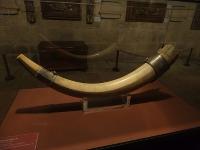

Olifant of Alfonso XI. An olifant is an ivory hunting horn made from elephants' tusks.


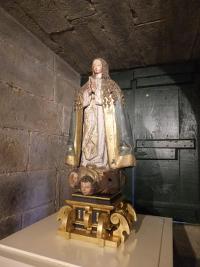


"Immaculate"



St Francis of Assisi gets stigmata



St. Michael weighing souls




St Anne, Virgin and Child
The art was in general better than what I'd seen before, but I still hold the opinion that Iberia missed out the Renaissance.
I then exited the museum proper.

Tower from Cloisters
These were the largest cloisters I'd been in, I think.





Basin in centre


"Mors Sceptra Ligonibus S Aeovat"



Bells
There were some other rooms. The first had 2 altars (?) and some tombs.


Altar (?)


Tomb of Alfonso IX of Leon


Another altar (?)


More tombs at the side


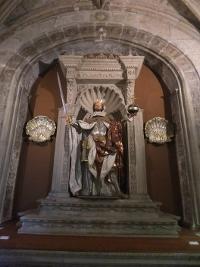


Scallops flanking an enthroned King
The plaque reads "Scallop"
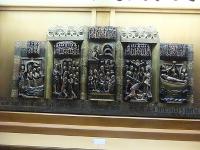




Altarpiece of the life of the Apostle James




Santiago at the Battle of Clavijo, 1677. Plata. Portuguese school of Anonima.
Guess who Santiago is trampling under his horse's hooves?




Processional monstrance (vessel used to display the consecrated Eucharistic host)




Cape of the Holy Apostle





Crest on wall






"Pestle and the masked" tapestry
There were some Flemish tapestries which were not bad, and a Goya.




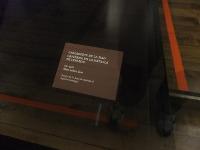
"Gallardette of the flagship in the Battle of Lepanto"
A souvenir from Lepanto: woo hoo!